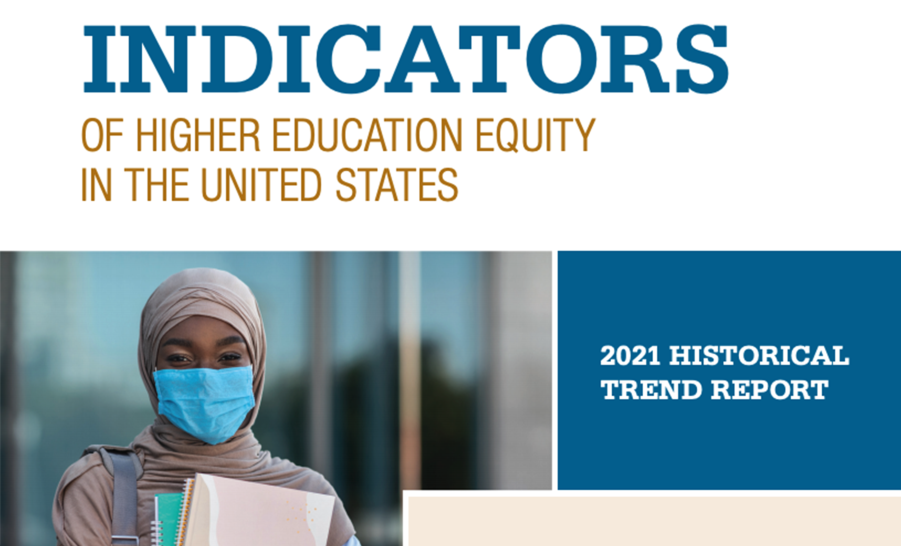Indicators of Higher Education Equity in the United States
This report tracks college entrance and completion by family income, socioeconomic status, and race/ethnicity.
The Pell Institute & PennAHEAD / May 2021

As in previous Indicators reports, the data in the 2021 Indicators show persisting inequality in higher education opportunity based on family income, race/ethnicity, parent education, location of residence, and dependency status. This year the focus will be on the statistics and the stories of nontraditional students (financially independent adult students) who delayed enrollment after high school or are returning to college.
This report is the seventh in a series of historical trend reports. The goal of the Equity Indicators project is to provide a tool for stakeholders (students, scholars, advocates, policy makers and the public) to look at higher education statistics from an equity perspective, and to engage in dialogues designed to consider actionable public policies focused on attaining greater equity within higher education. The report covers historical trends as far back as the data warrant often from the 1970s, on questions of student access, institutional stratification, college cost, funding per student, student debt, college completion and attainment, international comparisons, and federal TRIO services.